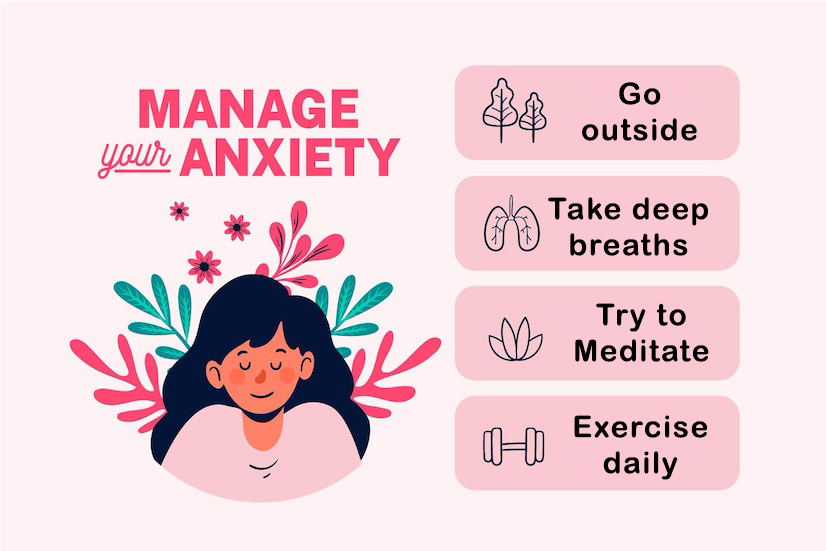
by Don Laird, contributing writer
It’s no secret that we all feel higher levels of stress and anxiety these days. Even as we emerge from the global pandemic, the anxiety surrounding the events of the past few years has taken its toll on us emotionally and physically. Our children are not exempt from these feelings and may, in fact, suffer more if anxiety is left unattended. It is especially important during this time of year to take inventory of your family’s self-care tool box. Are you being proactive about stress and anxiety? Talking is great, but here are some other things to try to help curb the weight you and your family may feel from your emotions.
What is the difference between a panic attack and an anxiety attack?
Anxiety symptoms vary in intensity, from mild to severe. Panic attacks appear suddenly, while anxiety symptoms tend to grow more intense over minutes, hours, or days. Panic attacks usually subside after ten or twenty minutes, while anxiety symptoms can last for much longer periods of time.
What do I do if I’m having a panic attack?
Grounding techniques help control these symptoms by turning attention away from thoughts, memories, or worries, and refocusing on the present moment.
What is a grounding technique?
Using the 5-4-3-2-1 grounding technique, you will purposefully take in the details of your surroundings using all your senses. Your senses will not deceive you where your thoughts and feelings might. Try to notice small details that your mind would usually tune out, such as distant sounds, or the texture of an ordinary object.
- (5) What are 5 things you can see? Look for small details such as a pattern on the wall or ceiling or the way light reflects off a surface.
- (4) What are 4 things you can hear? Pay special attention to the sounds your mind has tuned out, such as a ticking clock, distant traffic, children playing or a dog barking.
- (3) What are 3 things you can touch/feel? Notice the sensation of the sun on your skin, or the feeling of the chair you are sitting in. Pick up an object and examine its weight, color, and texture.
- (2) What are 2 things you can smell? Try to notice smells in the air around you, like freshly mowed grass or falling rain. You may also use something that has a scent, such as a candle, potpourri, or flowers.
- (1) What is 1 thing you can taste or something you enjoy the taste of? Try chewing gum or a small piece of candy. Notice the texture, be mindful of the flavors and aromas, too.
How can I stop a panic or anxiety attack from happening?
Use this deep or diaphragmatic breathing technique. When you are first trying this breathing exercise, it may be easier for you to follow the instructions lying down. As you gain more practice, you can try the diaphragmatic breathing technique while sitting in a chair.
- Sit comfortably, with your shoulders, arms, legs, head, and neck relaxed.
- Place your left hand on your upper chest and the right just below your rib cage. This will allow you to feel your diaphragm move as you breathe.
- Breathe in slowly through your nose so that your stomach moves out against your right hand. Your left hand should remain on your chest as still as possible.
- Tighten your stomach muscles, letting them fall inward as you exhale. Continue to keep your left hand on your upper chest as still as possible.
At first, you’ll probably get tired while doing this exercise. But keep at it, because with continued practice, diaphragmatic breathing will become easy and automatic and is healthy for your body, mind, and spirit.
How often should I practice this exercise?
At first, practice this exercise 3-5 minutes about 1-2 times per day. Most people like to do this first thing in the morning or as part of a bedtime routine. Gradually increase the amount of time you spend doing this exercise. It helps during a panic attack, during times of high anxiety, or is a proactive way promoting daily health and wellness.
The above techniques are not a substitute for medical advice. Nor do they replace the benefits of working with a professional therapist. If you are experiencing panic attacks or high levels of stress and anxiety, look for a licensed professional therapist or talk with your primary care physician for help.
***
 Don Laird, NCC, LPC, DCC, is a Licensed Professional Counselor with 20 years of experience providing psychotherapy and counseling to adults, teens and couples who are struggling with a wide range of mental health and life issues. Don is a writer and adjunct professor who teaches graduate and undergraduate courses in professional counseling and psychology at Carlow University. Additionally, he facilitates workshops and classes in dreams, creativity, self growth, and stress reduction.
Don Laird, NCC, LPC, DCC, is a Licensed Professional Counselor with 20 years of experience providing psychotherapy and counseling to adults, teens and couples who are struggling with a wide range of mental health and life issues. Don is a writer and adjunct professor who teaches graduate and undergraduate courses in professional counseling and psychology at Carlow University. Additionally, he facilitates workshops and classes in dreams, creativity, self growth, and stress reduction.

